How overdose deaths changed in every state during COVID-19

one photo // Shutterstock
How overdose deaths changed in every state during the coronavirus
The coronavirus has caused increased stress and isolation for many people. Some have turned to substance abuse or increased the quantity and frequency of drug use during the coronavirus restrictions. Others turned to new drugs if their prefered drug became more difficult to access.
More drug users were using alone due to social distancing measures, which increases the risk of overdose death since there isn’t someone to administer first aid and call for help. With in-person socializing and community-based programs temporarily closed, there were fewer in-person recovery resources available.
In total, drug overdose deaths in the United States rose by around 30%, totalling an estimated 96,779 people between March 2020 and March 2021. While there is national guidance from the U.S. Department of Health and Human Services regarding overdose prevention, each state has its own programs and strategies to combat drug abuse and substance abuse.
Zinnia Health analyzed provisional data released by the Centers for Disease Control and Prevention’s National Center for Health Statistics on drug overdose deaths across the United States. Zinnia Health compared data collected between March 2020 and March 2021 to data from March 2019 to March 2020 to understand how drug overdose deaths changed in every state during the coronavirus. When available, the types of drugs that caused overdose deaths are included in information for each state.
![]()

Hank Shiffman // Shutterstock
#51. South Dakota
– Drug overdose deaths (March 2020–March 2021): 77 (-16.3% change from March 2019–2020)
— Opioid-related deaths: 35 (-10.3% change)
— Synthetic opioid-related deaths, excluding methadone: 27 (+3.8% change)
— Psychostimulant-related deaths: 34 (-5.6% change)
South Dakota received a grant from the Centers for Disease Control and Prevention (CDC) to help combat prescription opiate abuse. The Avoid Opioid portal connects visitors with information on opioids, hotlines, and treatment centers, as well as information on reversing an overdose and prescription drug disposal.

Wangkun Jia // Shutterstock
#50. New Hampshire
– Drug overdose deaths (March 2020–March 2021): 378 (-3.3% change from March 2019–2020)
— Opioid-related deaths: 331 (-6.2% change)
— Synthetic opioid-related deaths, excluding methadone: 310 (-6.6% change)
— Methadone-related deaths: 16 (+60% change)
— Cocaine-related deaths: 35 (-47.8% change)
— Psychostimulant-related deaths: 52 (-21.2% change)
The New Hampshire Department of Health and Human Services runs The Partnership for a drug-free New Hampshire. Resources include The Power of Prevention podcast and resources for families and young adults affected by substance abuse.

f11photo // Shutterstock
#49. New Jersey
– Drug overdose deaths (March 2020–March 2021): 2,829 (-1.9% change from March 2019–2020)
— Opioid-related deaths: 2,542 (-1.5% change)
— Synthetic opioid-related deaths, excluding methadone: 2,359 (+2.4% change)
— Methadone-related deaths: 149 (+36.7% change)
— Cocaine-related deaths: 867 (-7.5% change)
— Heroin-related deaths: 604 (-39.1% change)
— Psychostimulant-related deaths: 275 (+23.9% change)
The Partnership for a Drug Free New Jersey offers school-based programs for students starting in third grade. It also offers continuing education for health care providers on opioids and resources for businesses to create drug-free workplace policies.

Real Window Creative // Shutterstock
#48. Delaware
– Drug overdose deaths (March 2020–March 2021): 458 (+.9% change from March 2019–2020)
— Opioid-related deaths: 422 (+1% change)
— Synthetic opioid-related deaths, excluding methadone: 383 (+3.8% change)
— Methadone-related deaths: 42 (+27.3% change)
— Cocaine-related deaths: 157 (-3.7% change)
— Heroin-related deaths: 83 (-26.5% change)
— Psychostimulant-related deaths: 52 (+108% change)
The Delaware Division of Public Health runs Help is Here to help residents with mental health issues and addiction. Resources to connect people with counselors and addiction specialists are available, as are resources to help parents discuss drug abuse with their children.
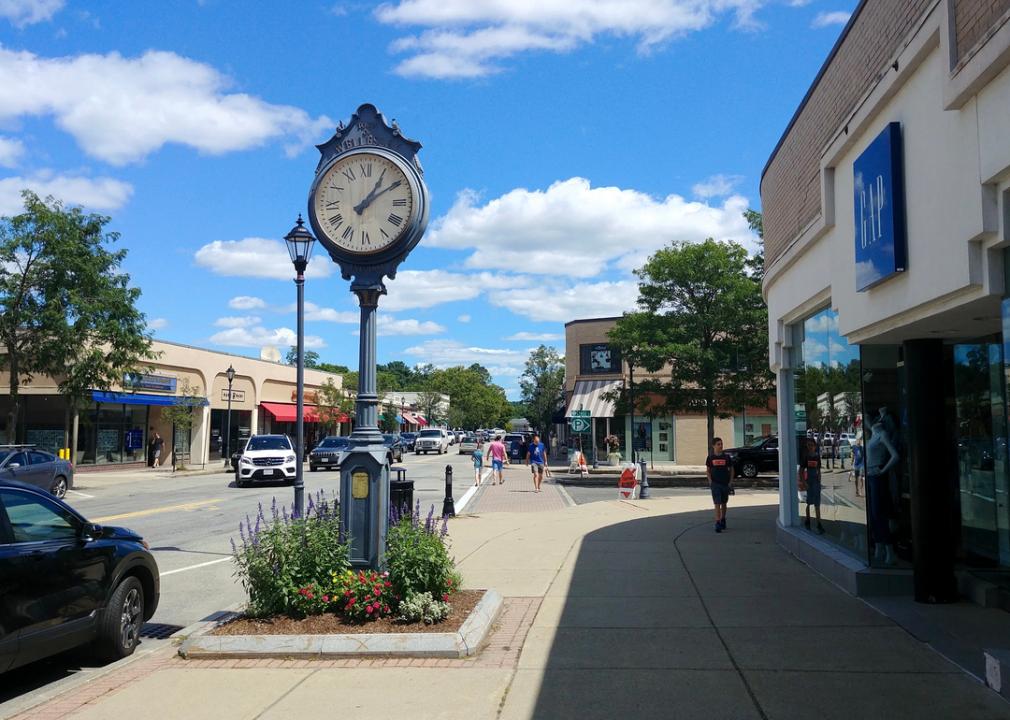
quiggyt4 // Shutterstock
#47. Massachusetts
– Drug overdose deaths (March 2020–March 2021): 2,377 (+7.4% change from March 2019–2020)
— Opioid-related deaths: 2,113 (+6.1% change)
— Synthetic opioid-related deaths, excluding methadone: 1,999 (+5.8% change)
— Methadone-related deaths: 121 (+83.3% change)
— Cocaine-related deaths: 973 (+16.5% change)
— Heroin-related deaths: 208 (-33.5% change)
— Psychostimulant-related deaths: 193 (+99% change)
The Commonwealth of Massachusetts has a web page dedicated to substance use prevention. Information includes a video on how to stop an overdose with Narcan and the latest statistics on the impact the opioid crisis has on the state.

James Kirkikis // Shutterstock
#46. Connecticut
– Drug overdose deaths (March 2020–March 2021): 1,413 (+9.7% change from March 2019–2020)
— Opioid-related deaths: 1,273 (+8.3% change)
— Synthetic opioid-related deaths, excluding methadone: 1,165 (+11.3% change)
— Methadone-related deaths: 119 (+36.8% change)
— Cocaine-related deaths: 422 (+1.9% change)
— Heroin-related deaths: 186 (-41.3% change)
— Psychostimulant-related deaths: 93 (+32.9% change)
DrugFreeCT.org is funded by the Connecticut Department of Mental Health and Addiction Services and offers information on the potential for misuse of drugs ranging from cannabis to fentanyl and methamphetamines. DrugFreeCT.org also has a robust section on vaping and smoking tobacco including cessation resources.

GypsyPictureShow // Shutterstock
#45. Idaho
– Drug overdose deaths (March 2020–March 2021): 275 (+10% change from March 2019–2020)
The Idaho Department of Health and Welfare has an online resource page devoted to substance use disorders. The Behavioral Health newsletter offers information on mental health and substance abuse topics. Links to statewide crisis centers and recovery centers can also be accessed through the site.
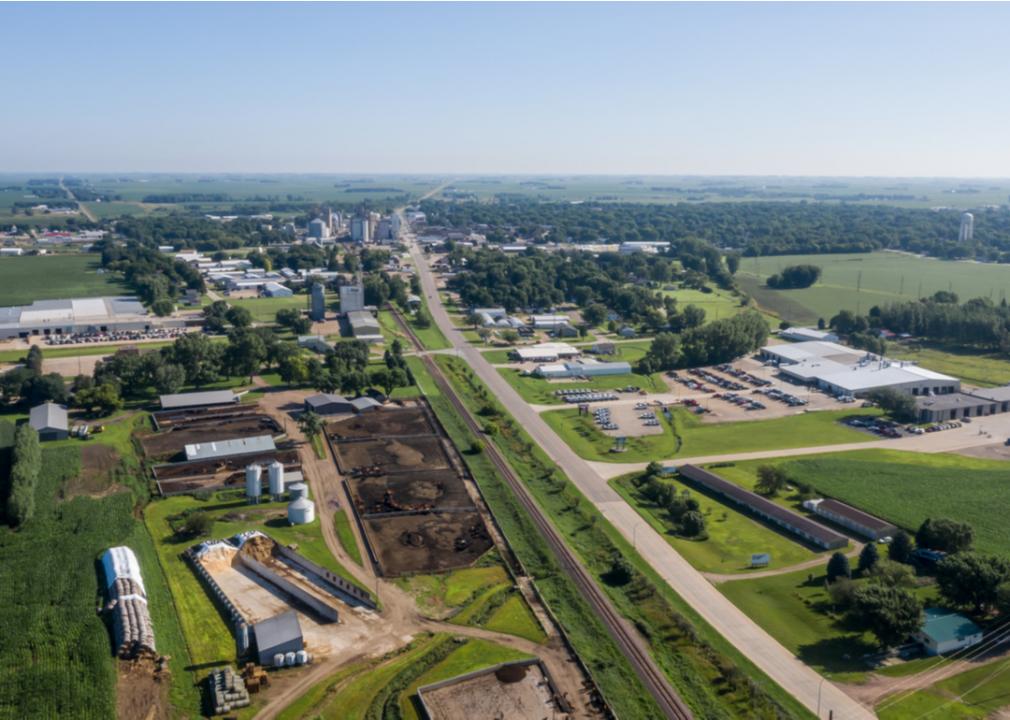
Joel McCartan // Shutterstock
#44. Iowa
– Drug overdose deaths (March 2020–March 2021): 429 (+14.7% change from March 2019–2020)
— Opioid-related deaths: 221 (+30.8% change)
— Synthetic opioid-related deaths, excluding methadone: 173 (+45.4% change)
— Methadone-related deaths: 12 (2019–2020 data not available)
— Cocaine-related deaths: 28 (+33.3% change)
— Heroin-related deaths: 53 (+26.2% change)
— Psychostimulant-related deaths: 167 (+1.8% change)
Partnership for a Healthy Iowa combines resources to deliver outreach programs on high-risk behaviors ranging from media overuse and sexting to substance abuse and alcohol consumption. Its free resource library has lessons and videos for students, teachers, and parents.

Sandra Foyt // Shutterstock
#43. Wyoming
– Drug overdose deaths (March 2020–March 2021): 93 (+14.8% change from March 2019–2020)
— Opioid-related deaths: 57 (+26.7% change)
— Synthetic opioid-related deaths, excluding methadone: 27 (+50% change)
— Heroin-related deaths: 12 (2019–2020 data not available)
— Psychostimulant-related deaths: 33 (+32% change)
Wyoming has a Medication Donation Program where donated medications are used to help fill prescriptions for low-income patients that couldn’t otherwise afford them. The program keeps unwanted prescription medications out of the water supply and prevents accidental poisonings and drug abuse.

Randall Runtsch // Shutterstock
#42. North Dakota
– Drug overdose deaths (March 2020–March 2021): 120 (+15.4% change from March 2019–2020)
The North Dakota Prevention and Resource Center offers free resource materials on underage drinking, binge drinking, prescription drug and opioid abuse, and mental health. The center offers specific guidance for high-risk groups such as tribal communities and military families.

Nick Fox // Shutterstock
#41. Montana
– Drug overdose deaths (March 2020–March 2021): 163 (+15.6% change from March 2019–2020)
— Opioid-related deaths: 88 (2019-2020 data not available)
— Synthetic opioid-related deaths, excluding methadone: 30 (2019–2020 data not available)
— Heroin-related deaths: 30 (2019-2020 data not available)
— Psychostimulant-related deaths: 67 (2019-2020 data not available)
The Montana Department of Health and Human Services has a substance use disorder services and resources page. The site offers resources for treatment providers and facts about drug use in the state.

Sean Pavone // Shutterstock
#40. Pennsylvania
– Drug overdose deaths (March 2020–March 2021): 5,321 (+15.8% change from March 2019–2020)
Drug Free Workplace PA is a tax-funded program that helps companies and communities navigate the dangers of substance abuse. It offers policy builders for employers and training for employees and families navigating their own or another’s substance abuse.

DiegoMariottini // Shutterstock
#39. Illinois
– Drug overdose deaths (March 2020–March 2021): 3,508 (+16.2% change from March 2019–2020)
— Opioid-related deaths: 2,917 (+18.7% change)
— Synthetic opioid-related deaths, excluding methadone: 2,516 (+32.2% change)
— Methadone-related deaths: 205 (+21.3% change)
— Cocaine-related deaths: 1,112 (+14.8% change)
— Heroin-related deaths: 988 (-8.3% change)
— Psychostimulant-related deaths: 434 (+60.1% change)
The Illinois helpline for opioids and other substances helps those struggling with addiction and their families. The lines are open 24/7 for call, text, or chat, and the site offers information on harm reduction and helping drug users and their loved ones connect with services in their areas.

Gary R Ennis Photos // Shutterstock
#38. Michigan
– Drug overdose deaths (March 2020–March 2021): 2,850 (+18.3% change from March 2019–2020)
— Opioid-related deaths: 2,305 (2019–2020 data not available)
— Synthetic opioid-related deaths, excluding methadone: 2,055 (2019–2020 data not available)
— Methadone-related deaths: 120 (2019–2020 data not available)
— Cocaine-related deaths: 706 (2019–2020 data not available)
— Heroin-related deaths: 395 (2019–2020 data not available)
— Psychostimulant-related deaths: 432 (2019–2020 data not available)
Be the Solution, a Drug Free Northern Michigan campaign seeks to increase public awareness of substance use disorder. Resources on how to start a recovery meeting and how to talk to children about substance abuse sit alongside information on trauma, vaping, and gambling.

Jason Finn // Shutterstock
#37. Utah
– Drug overdose deaths (March 2020–March 2021): 651 (+18.4% change from March 2019–2020)
— Opioid-related deaths: 446 (+14.7% change)
— Synthetic opioid-related deaths, excluding methadone: 161 (+78.9% change)
— Methadone-related deaths: 31 (+40.9% change)
— Cocaine-related deaths: 45 (+18.4% change)
— Heroin-related deaths: 144 (+5.1% change)
— Psychostimulant-related deaths: 249 (+12.2% change)
Stop the Opidemic was set up by the Utah state government to teach residents about the extent of the opioid epidemic in the state as well as safer ways to manage pain. The community section highlights personal stories of opioid abuse and recovery; it also allows community members to upload their own stories of how the opioid epidemic has affected them.

eurobanks // Shutterstock
#36. Maryland
– Drug overdose deaths (March 2020–March 2021): 2,826 (+18.7% change from March 2019–2020)
— Opioid-related deaths: 2,571 (+20% change)
— Synthetic opioid-related deaths, excluding methadone: 2,388 (+22.1% change)
— Methadone-related deaths: 289 (+52.1% change)
— Cocaine-related deaths: 751 (+2% change)
— Heroin-related deaths: 90 (-49.4% change)
— Psychostimulant-related deaths: 125 (+45.3% change)
The Maryland chapter of the National Council on Alcoholism and Drug Dependence helps people with addiction issues and their families access resources and support for treatment and recovery. It connects people with treatment providers in their area and links to news articles related to addiction in Maryland.

MNStudio // Shutterstock
#35. Hawaii
– Drug overdose deaths (March 2020–March 2021): 279 (+18.7% change from March 2019–2020)
— Opioid-related deaths: 80 (+66.7% change)
— Synthetic opioid-related deaths, excluding methadone: 35 (+105.9% change)
— Cocaine-related deaths: 16 (+14.3% change)
— Heroin-related deaths: 25 (+56.3% change)
— Psychostimulant-related deaths: 194 (+18.3% change)
The Coalition for a Drug Free Hawaii runs the Hawaii Prevention Resource Center and the Hawaii Pacific Center for Excellence to enhance the field of substance abuse prevention. Programs serve families, couples, children, and communities through a coalition of local organizations.

Sean Pavone // Shutterstock
#34. Wisconsin
– Drug overdose deaths (March 2020–March 2021): 1,531 (+19.1% change from March 2019–2020)
— Opioid-related deaths: 1,273 (+27.6% change)
— Synthetic opioid-related deaths, excluding methadone: 1,116 (+49.8% change)
— Methadone-related deaths: 75 (+31.6% change)
— Cocaine-related deaths: 381 (+4.7% change)
— Heroin-related deaths: 239 (-15.8% change)
— Psychostimulant-related deaths: 278 (+48.7% change)
The Wisconsin Addiction Recovery Helpline is available 24/7 to offer treatment and support options. In-person and virtual support groups are available as well as information on drug takeback programs and how to afford addiction treatment.

Paul Brady Photography // Shutterstock
#33. Missouri
– Drug overdose deaths (March 2020–March 2021): 1,980 (+19.6% change from March 2019–2020)
— Opioid-related deaths: 1,470 (+27.4% change)
— Synthetic opioid-related deaths, excluding methadone: 1,311 (+36.4% change)
— Methadone-related deaths: 27 (0% change)
— Cocaine-related deaths: 201 (+20.4% change)
— Heroin-related deaths: 148 (-24.9% change)
— Psychostimulant-related deaths: 597 (+24.1% change)
The Missouri Department of Mental Health has a comprehensive list of resources on recovery, mental health, and fact sheets for specific substances. Self-help guides and information about how mental illnesses affect various segments of the population are also available.
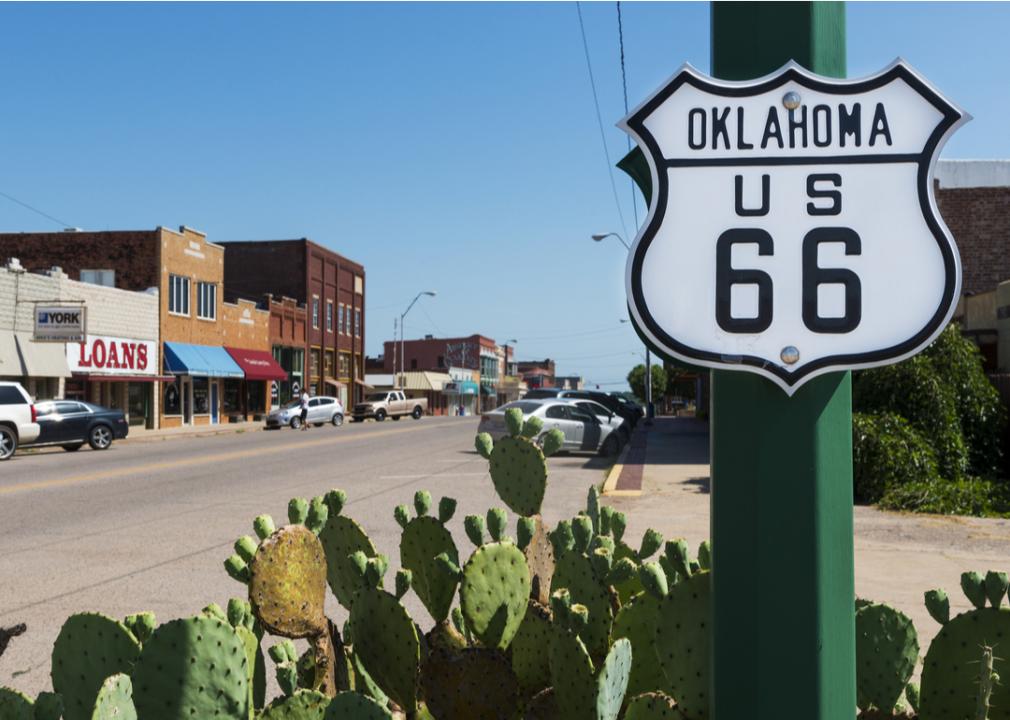
TLF Images // Shutterstock
#32. Oklahoma
– Drug overdose deaths (March 2020–March 2021): 786 (+21.3% change from March 2019–2020)
— Opioid-related deaths: 329 (+32.7% change)
— Synthetic opioid-related deaths, excluding methadone: 177 (+145.8% change)
— Methadone-related deaths: 21 (+61.5% change)
— Cocaine-related deaths: 55 (+34.1% change)
— Heroin-related deaths: 70 (-16.7% change)
— Psychostimulant-related deaths: 436 (+29.8% change)
The Oklahoma Department of Mental Health and Substance Abuse Services incorporates all facets of mental wellness and recovery, including access to housing, criminal justice initiatives, and public policy. Treatment courses and crisis response resources are also available.
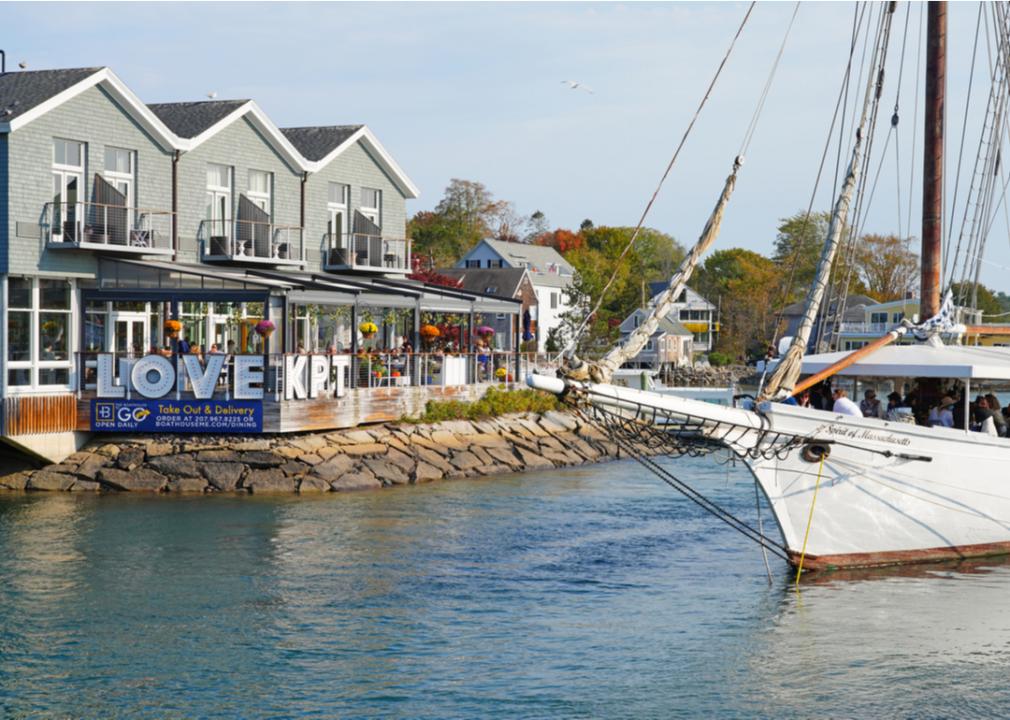
EQRoy // Shutterstock
#31. Maine
– Drug overdose deaths (March 2020–March 2021): 518 (+23.3% change from March 2019–2020)
— Opioid-related deaths: 451 (+25.6% change)
— Synthetic opioid-related deaths, excluding methadone: 398 (+27.2% change)
— Methadone-related deaths: 32 (+28% change)
— Cocaine-related deaths: 106 (-14.5% change)
— Heroin-related deaths: 43 (-28.3% change)
— Psychostimulant-related deaths: 139 (+61.6% change)
The Maine Department of Health and Human Services offers outpatient and residential detox programs for opioid use disorder, including office-based treatments and treatments at home. In December 2020, the Drug Enforcement Administration implemented its multi-pronged 360 Strategy in Maine to address the opioid epidemic.

Ramunas Bruzas // Shutterstock
#30. Rhode Island
– Drug overdose deaths (March 2020–March 2021): 405 (+23.9% change from March 2019–2020)
— Opioid-related deaths: 338 (+26.6% change)
— Synthetic opioid-related deaths, excluding methadone: 301 (+30.9% change)
— Methadone-related deaths: 44 (+33.3% change)
— Cocaine-related deaths: 193 (+26.1% change)
— Psychostimulant-related deaths: 42 (+100% change)
The Rhode Island Prevention Resource Center provides training and resources to providers focused on substance abuse prevention through its certification system and digital tools. The state legislature has also green lighted a harm-reduction pilot program to establish injection sites for IV drug users to reduce overdose deaths.

Sean Pavone // Shutterstock
#29. District of Columbia
– Drug overdose deaths (March 2020–March 2021): 518 (+23.9% change from March 2019–2020)
— Opioid-related deaths: 416 (+30% change)
— Synthetic opioid-related deaths, excluding methadone: 392 (+32.9% change)
— Methadone-related deaths: 36 (+125% change)
— Cocaine-related deaths: 189 (+23.5% change)
— Heroin-related deaths: 99 (-4.8% change)
— Psychostimulant-related deaths: 11 (-21.4% change)
The Department of Behavioral Health’s Drug Free Youth DC campaign seeks to prevent abuse of drugs, alcohol, and tobacco by young people in Washington D.C. In addition to helping teens and adults navigate the law when it comes to controlled substances, Drug Free Youth DC provides information on the offerings of each ward’s prevention centers.
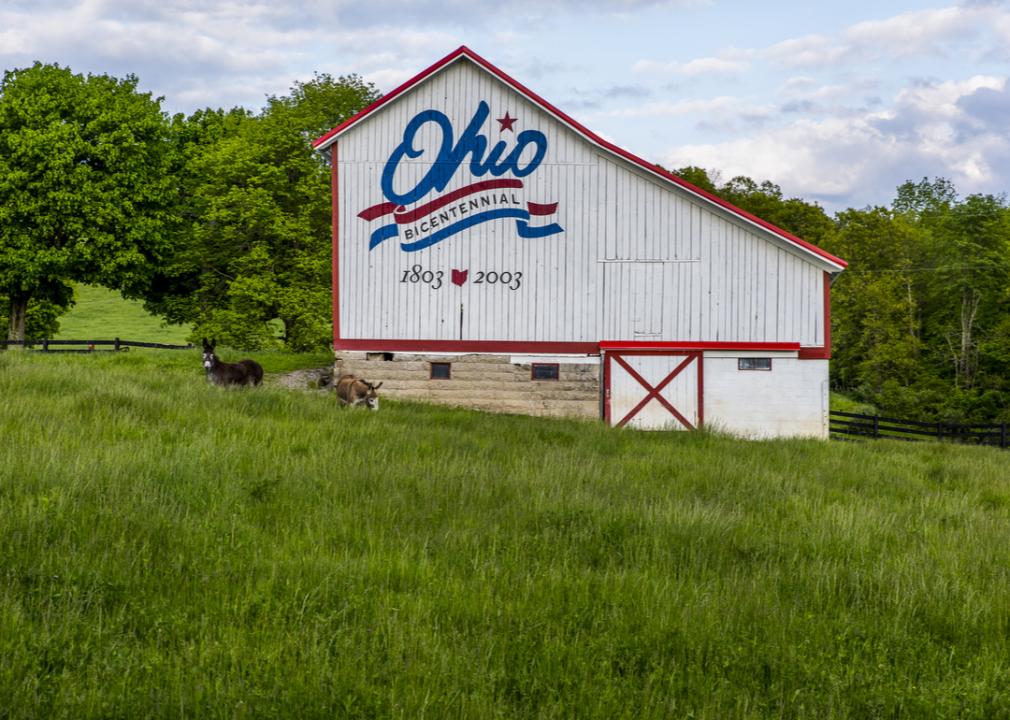
The American Wanderer // Shutterstock
#28. Ohio
– Drug overdose deaths (March 2020–March 2021): 5,479 (+26% change from March 2019–2020)
— Opioid-related deaths: 4,638 (+31.1% change)
— Synthetic opioid-related deaths, excluding methadone: 4,351 (+34.8% change)
— Methadone-related deaths: 93 (+22.4% change)
— Cocaine-related deaths: 1,259 (+.2% change)
— Heroin-related deaths: 268 (-39% change)
— Psychostimulant-related deaths: 1,135 (+25.6% change)
The Prevention Action Alliance was founded in 1987 during the cocaine epidemic and has evolved to provide tips for parents and educational resources for schools. In partnership with the Ohio Department of Mental Health and Addiction Services, the alliance also has an advocacy arm to lobby legislators to pass drug prevention bills.

turtix // Shutterstock
#27. New Mexico
– Drug overdose deaths (March 2020–March 2021): 821 (+26.7% change from March 2019–2020)
— Opioid-related deaths: 547 (+22.9% change)
— Synthetic opioid-related deaths, excluding methadone: 357 (+99.4% change)
— Methadone-related deaths: 59 (+5.4% change)
— Cocaine-related deaths: 123 (+39.8% change)
— Heroin-related deaths: 173 (-13.1% change)
— Psychostimulant-related deaths: 374 (+26.4% change)
The Substance Abuse Epidemiology Program, run by the New Mexico Department of Health, is a data repository on substance abuse in the state shared with policymakers and community groups. The New Mexico Opioid Hub connects the state’s many organizations offering services related to the opioid crisis ranging from psychosocial and online support to methadone and naloxone clinics.

FotosForTheFuture // Shutterstock
#26. Florida
– Drug overdose deaths (March 2020–March 2021): 7,700 (+28.3% change from March 2019–2020)
The Florida Behavioral Health Association represents community treatment centers and provides education on behavioral health and substance use disorders. The medically assisted treatment used in corrections programs trains corrections professionals to use a whole patient approach to keep people released from custody from relapsing to opioid use.

Brandon Burris // Shutterstock
#25. Arizona
– Drug overdose deaths (March 2020–March 2021): 2,708 (+28.9% change from March 2019–2020)
— Opioid-related deaths: 1,976 (+36.4% change)
— Synthetic opioid-related deaths, excluding methadone: 1,592 (+61.6% change)
— Methadone-related deaths: 78 (+6.8% change)
— Cocaine-related deaths: 191 (+9.8% change)
— Heroin-related deaths: 212 (-15.2% change)
— Psychostimulant-related deaths: 1,150 (+42.2% change)
Between June 2017 and November 2021, there have been 44,546 doses of naloxone administered, preventing thousands of overdose deaths in Arizona. In the state, two babies are born suffering from opioid withdrawal each day. The Department of Health services has a variety of resources on Neonatal Abstinence Syndrome for addicted babies and their families.

GagliardiPhotography // Shutterstock
#24. New York
– Drug overdose deaths (March 2020–March 2021): 2,950 (+30.5% change from March 2019–2020)
— Opioid-related deaths: 2,518 (+35.6% change)
— Synthetic opioid-related deaths, excluding methadone: 2,243 (+48.7% change)
— Methadone-related deaths: 169 (+56.5% change)
— Cocaine-related deaths: 937 (+20.4% change)
— Heroin-related deaths: 483 (-4.7% change)
— Psychostimulant-related deaths: 289 (+46.7% change)
The New York State Office of Addiction Services and Support offers screening services for outpatient providers as well as medication-assisted treatment (MAT) at home. MAT is recommended for opioid use disorder as it eases withdrawal symptoms and curbs cravings.
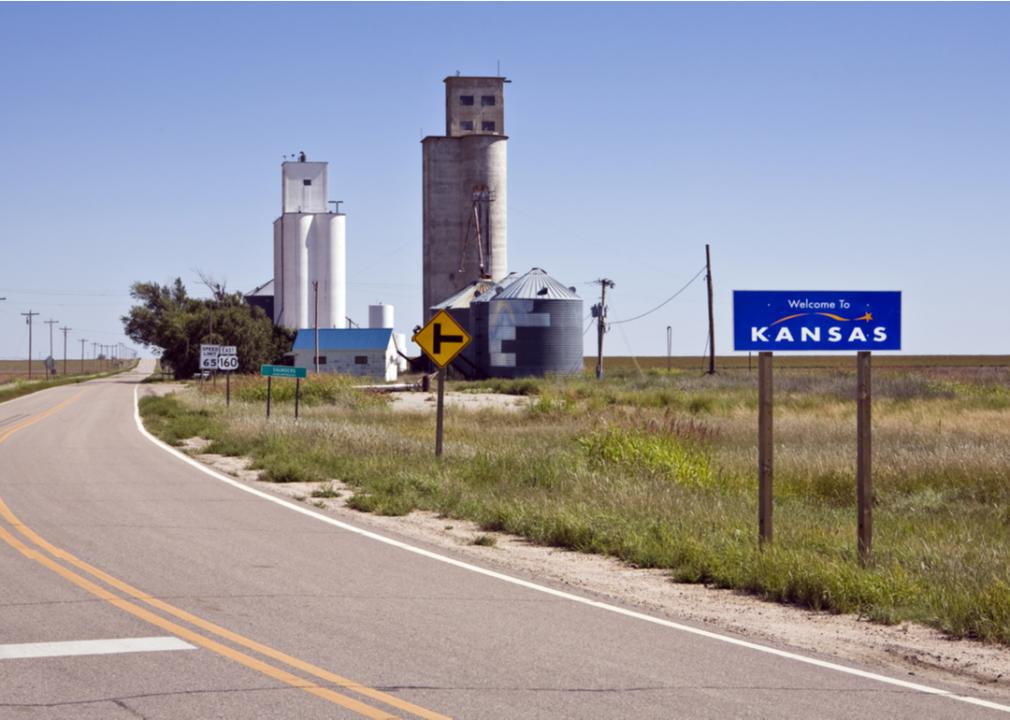
barteverett // Shutterstock
#23. Kansas
– Drug overdose deaths (March 2020–March 2021): 520 (+34.4% change from March 2019–2020)
— Opioid-related deaths: 288 (+54% change)
— Synthetic opioid-related deaths, excluding methadone: 202 (+152.5% change)
— Cocaine-related deaths: 40 (+33.3% change)
— Heroin-related deaths: 36 (+2.9% change)
— Psychostimulant-related deaths: 201 (+27.2% change)
The Kansas Department of Aging and Disability Services offers peer mentoring and person-centered case management to keep the person struggling with addiction front and center rather than the problem. Reintegration treatments help prevent relapse by focusing on personal responsibility and emotional functioning to promote healthy family and work relationships.

Bob Pool // Shutterstock
#22. Alabama
– Drug overdose deaths (March 2020–March 2021): 1,064 (+34.5% change from March 2019–2020)
Alabama Public Health recommends the CAGE test to determine whether someone has a prescription drug use problem for which they should seek help. If those taking the drugs ever feel the need to C—cut down on medication, A—feel annoyed by others’ remarks about their drug use, G—feel guilty after taking prescription medications, or E—ever use drugs to get going or calm down, they should seek help.
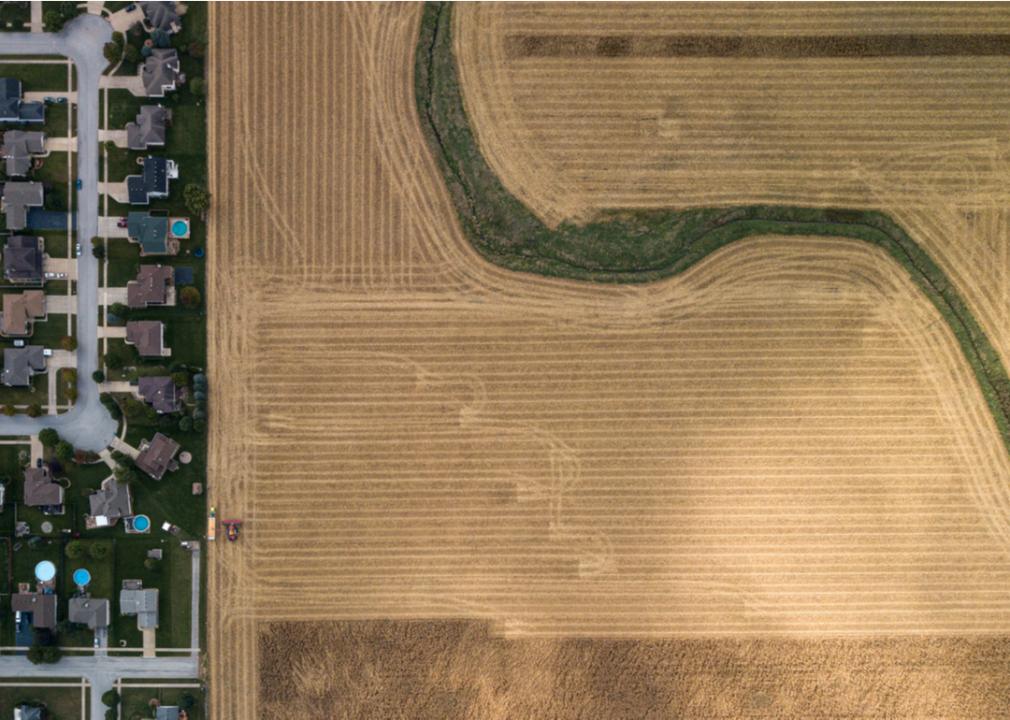
Robert Sarnowski // Shutterstock
#21. Indiana
– Drug overdose deaths (March 2020–March 2021): 2,428 (+35% change from March 2019–2020)
— Opioid-related deaths: 1,964 (+46.6% change)
— Synthetic opioid-related deaths, excluding methadone: 1,735 (+67% change)
— Methadone-related deaths: 52 (+13% change)
— Cocaine-related deaths: 325 (+16.9% change)
— Heroin-related deaths: 172 (-38.1% change)
— Psychostimulant-related deaths: 761 (+31.7% change)
Indiana University has responded to the opioid epidemic in the state by putting together resources, including some on how to reduce the stigma of addiction, which can prevent people from seeking help. Using terms like a “person with substance use disorder” or “disease” is more helpful than terms like “addict, junkie, druggie, or abuser,” to destigmatize substance abuse disorders and encourage people to seek support.
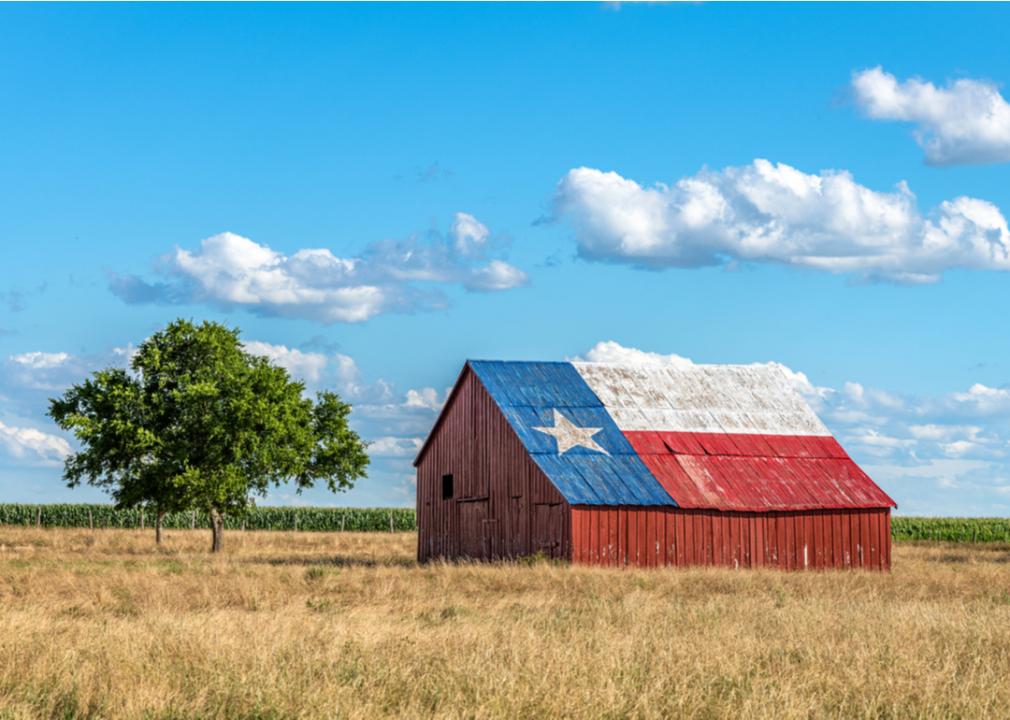
Joe Belanger // Shutterstock
#20. Texas
– Drug overdose deaths (March 2020–March 2021): 4,506 (+36.9% change from March 2019–2020)
— Opioid-related deaths: 2,370 (+58.4% change)
— Synthetic opioid-related deaths, excluding methadone: 1,289 (+180.2% change)
— Methadone-related deaths: 134 (+50.6% change)
— Cocaine-related deaths: 1,102 (+31.8% change)
— Heroin-related deaths: 809 (+10.1% change)
— Psychostimulant-related deaths: 1,669 (+40% change)
The Texas Department of Health and Human Services offers outreach, screening, assessment, and referral (OSAR) as a starting point for people wanting help accessing substance abuse services. Specialized female services and youth services are also available, as well as a 24/7 hotline.

Marc Cappelletti // Shutterstock
#19. Alaska
– Drug overdose deaths (March 2020–March 2021): 162 (+38.5% change from March 2019–2020)
— Opioid-related deaths: 119 (+72.5% change)
— Synthetic opioid-related deaths, excluding methadone: 75 (+200% change)
— Methadone-related deaths: 10 (2019–2020 data not available)
— Cocaine-related deaths: 20 (2019–2020 data not available)
— Heroin-related deaths: 40 (+17.6% change)
— Psychostimulant-related deaths: 81 (+47.3% change)
The Alaska Department of Health and Social Services offers a toolkit on addiction in the workplace for employers to help promote health and safety on the job. The toolkit has been updated with additional resources to help managers maintain connections and check in on employee mental health during the shift to teleworking due to the coronavirus.

Jess Kraft // Shutterstock
#18. Oregon
– Drug overdose deaths (March 2020–March 2021): 879 (+38.9% change from March 2019–2020)
— Opioid-related deaths: 541 (+56.4% change)
— Synthetic opioid-related deaths, excluding methadone: 291 (+196.9% change)
— Methadone-related deaths: 26 (-18.8% change)
— Cocaine-related deaths: 76 (+22.6% change)
— Heroin-related deaths: 198 (+20% change)
— Psychostimulant-related deaths: 411 (+41.7% change)
Since 1999, Oregon’s Pain Management Program has helped care providers, the general public, and legislators understand and manage chronic pain. Oregon Health Authority offers a Pain Care Toolbox to help prescribers and patients understand the nature of pain and key contributors such as poor sleep hygiene, negative thoughts and moods, lack of physical activity, and poor diet.

Kevin Capretti // Shutterstock
#17. Virginia
– Drug overdose deaths (March 2020–March 2021): 2,210 (+39% change from March 2019–2020)
— Opioid-related deaths: 1,904 (+47.1% change)
— Synthetic opioid-related deaths, excluding methadone: 1,700 (+60.5% change)
— Methadone-related deaths: 95 (+28.4% change)
— Cocaine-related deaths: 526 (+15.6% change)
— Heroin-related deaths: 461 (-11.5% change)
— Psychostimulant-related deaths: 439 (+99.5% change)
Virginia pharmacies supply naloxone without a prescription, allowing anyone to help stop an overdose from becoming fatal. Curb the Crisis combines the resources of five Virginia agencies to address the opioid public health emergency in the state.

Lauren Orr // Shutterstock
#16. Colorado
– Drug overdose deaths (March 2020–March 2021): 1,633 (+39.1% change from March 2019–2020)
— Opioid-related deaths: 1,068 (+51.1% change)
— Synthetic opioid-related deaths, excluding methadone: 662 (+99.4% change)
— Methadone-related deaths: 70 (+84.2% change)
— Cocaine-related deaths: 239 (+57.2% change)
— Heroin-related deaths: 232 (+5.9% change)
— Psychostimulant-related deaths: 618 (+61.4% change)
The biennial Colorado Health Access Survey dove into the reasons some people who would like to receive substance use treatment or counseling aren’t getting help. Key demographic factors less likely to get the help they desire include men, millennials, and those with low incomes. Many were concerned about the stigma of talking to a health care provider about drug use. They also worried about the cost and whether health insurance would cover treatment.

Trong Nguyen // Shutterstock
#15. Arkansas
– Drug overdose deaths (March 2020–March 2021): 535 (+39.3% change from March 2019–2020)
The Arkansas Department of Human Services funds a variety of drug abuse prevention providers, a working group, and programs such as NARCANsas, which helps teach the public how to administer Narcan. Opioid Prevention for Aging and Longevity focuses on the health of older adults and preventing opioid dependence by promoting non-opioid medications and activities such as yoga, acupuncture, and tai chi.

ESB Professional // Shutterstock
#14. Georgia
– Drug overdose deaths (March 2020–March 2021): 2,022 (+39.4% change from March 2019–2020)
— Opioid-related deaths: 1,420 (+60.6% change)
— Synthetic opioid-related deaths, excluding methadone: 1,026 (+133.2% change)
— Methadone-related deaths: 82 (+74.5% change)
— Cocaine-related deaths: 355 (+19.5% change)
— Heroin-related deaths: 394 (+21.6% change)
— Psychostimulant-related deaths: 677 (+49.4% change)
The Center for Maternal Substance Abuse Child Development at Emory University seeks to inform the public and help prevent substance abuse during pregnancy to support healthy families. The Council on Alcohol and Drugs focuses on education and advocacy using toolkits, videos, and book recommendations on addiction and recovery.

Max Lindenthaler // Shutterstock
#13. Washington
– Drug overdose deaths (March 2020–March 2021): 1,838 (+39.5% change from March 2019–2020)
— Opioid-related deaths: 1,295 (+52.7% change)
— Synthetic opioid-related deaths, excluding methadone: 775 (+112.9% change)
— Methadone-related deaths: 125 (+76.1% change)
— Cocaine-related deaths: 180 (+24.1% change)
— Heroin-related deaths: 391 (+16.7% change)
— Psychostimulant-related deaths: 822 (+49.2% change)
The state of Washington’s Apple Health program provides addiction treatment for enrolled members with special priorities for pregnant or postpartum drug users. A general recovery line and a special teen line are available 24 hours a day for emotional support and referrals to treatment options.

Jacob Boomsma // Shutterstock
#12. Nevada
– Drug overdose deaths (March 2020–March 2021): 983 (+39.6% change from March 2019–2020)
— Opioid-related deaths: 647 (+56.3% change)
— Synthetic opioid-related deaths, excluding methadone: 351 (+160% change)
— Methadone-related deaths: 31 (0% change)
— Cocaine-related deaths: 115 (+98.3% change)
— Heroin-related deaths: 147 (+10.5% change)
— Psychostimulant-related deaths: 462 (+37.1% change)
The Nevada State Opioid Response has a video library addressing topics such as harm reduction, prescribing guidelines, and recovery for pregnant drug users. The mobile recovery outreach teams provide care and community outreach as well as partnering with emergency departments and law enforcement.

Kevin Ruck // Shutterstock
#11. North Carolina
– Drug overdose deaths (March 2020–March 2021): 3,257 (+40% change from March 2019–2020)
— Opioid-related deaths: 2,759 (+49.6% change)
— Synthetic opioid-related deaths, excluding methadone: 2,440 (+70.9% change)
— Methadone-related deaths: 89 (+12.7% change)
— Cocaine-related deaths: 996 (+23.3% change)
— Heroin-related deaths: 440 (-22.9% change)
— Psychostimulant-related deaths: 670 (+82.6% change)
The Governor’s Institute is a North Carolina-based nonprofit focused on behavioral health. This includes substance abuse and helping health workers and employers better address drug abuse. It also works with veterans and their families to ensure they have the resources they need to live productive lives free of substance abuse.

Sandra Burm // Shutterstock
#10. Minnesota
– Drug overdose deaths (March 2020–March 2021): 1,177 (+42.3% change from March 2019–2020)
The Minnesota Recovery Connection is a community organization offering peer-to-peer support, outreach, and education around addiction and recovery. The Minnesota Department of Human Services runs the Congratulate and Educate program to educate retailers about their role in keeping tobacco out of the hands of young people.

Nicholas Stankus // Shutterstock
#9. Nebraska
– Drug overdose deaths (March 2020–March 2021): 214 (+44.6% change from March 2019–2020)
The University of Nebraska–Lincoln’s Rural Drug Addiction Research Center released a study showing an increase in methamphetamine use and overdose-related death. Admissions for meth addiction treatment increased 200% from 2008 to 2018, especially in people 50 and older.

Rigucci // Shutterstock
#8. California
– Drug overdose deaths (March 2020–March 2021): 9,758 (+44.6% change from March 2019–2020)
— Opioid-related deaths: 6,157 (+66.5% change)
— Synthetic opioid-related deaths, excluding methadone: 4,737 (+121.5% change)
— Methadone-related deaths: 264 (+25.1% change)
— Cocaine-related deaths: 1,207 (+25.3% change)
— Heroin-related deaths: 974 (-3% change)
— Psychostimulant-related deaths: 5,073 (+59.3% change)
The California government has proposed helping drug users to stay sober by paying them when they pass drug tests over a period of time. This intervention has had strong success with methamphetamine users at lower costs than other interventions.

PQK // Shutterstock
#7. South Carolina
– Drug overdose deaths (March 2020–March 2021): 1,811 (+45.6% change from March 2019–2020)
— Opioid-related deaths: 1,484 (+56% change)
— Synthetic opioid-related deaths, excluding methadone: 1,245 (+88.9% change)
— Methadone-related deaths: 47 (+51.6% change)
— Cocaine-related deaths: 337 (+18.2% change)
— Heroin-related deaths: 207 (-8.8% change)
— Psychostimulant-related deaths: 591 (+50.8% change)
The South Carolina Department of Alcohol and Other Drug Abuse Services works to prevent drug abuse through education and treat substance use disorder through state-licensed treatment providers. Treatments for DUI interventions, gambling interventions, detoxification, and temporary housing are available.

Nolichuckyjake // Shutterstock
#6. Tennessee
– Drug overdose deaths (March 2020–March 2021): 3,400 (+49.5% change from March 2019–2020)
— Opioid-related deaths: 2,701 (+60.6% change)
— Synthetic opioid-related deaths, excluding methadone: 2,403 (+83.6% change)
— Methadone-related deaths: 57 (+9.6% change)
— Cocaine-related deaths: 472 (+28.3% change)
— Heroin-related deaths: 309 (-12% change)
— Psychostimulant-related deaths: 1,166 (+58.4% change)
It’s estimated that 80% of crimes are in some way related to drug dealing and use, especially meth and opioids. The TN Recovery app can help those with substance use disorders get the information and counseling they need to recover.

Canva
#5. Mississippi
– Drug overdose deaths (March 2020–March 2021): 605 (+51.6% change from March 2019–2020)
— Opioid-related deaths: 438 (+72.4% change)
— Synthetic opioid-related deaths, excluding methadone: 347 (+131.3% change)
— Methadone-related deaths: 11 (0% change)
— Cocaine-related deaths: 66 (+53.5% change)
— Heroin-related deaths: 66 (0% change)
— Psychostimulant-related deaths: 243 (+85.5% change)
The Mississippi Department of Mental Health provides recovery services, vocational training, and addiction counseling. The department believes that four major dimensions of life lead to long-lasting recovery: maintaining health; having a stable home; having purpose in work, school, volunteering, or caring; and having a supportive community of family and friends.

Felix Mizioznikov // Shutterstock
#4. Louisiana
– Drug overdose deaths (March 2020–March 2021): 2,168 (+56.2% change from March 2019–2020)
Louisiana has some of the country’s harshest drug sentences, with up to 30 years in prison and $600,000 in fines for possession of Schedule 1 narcotics. The Louisiana Department of Health has treatment programs for withdrawal management, residential care for those with mental disorders as well as substance abuse, and opioid-specific treatment programs.
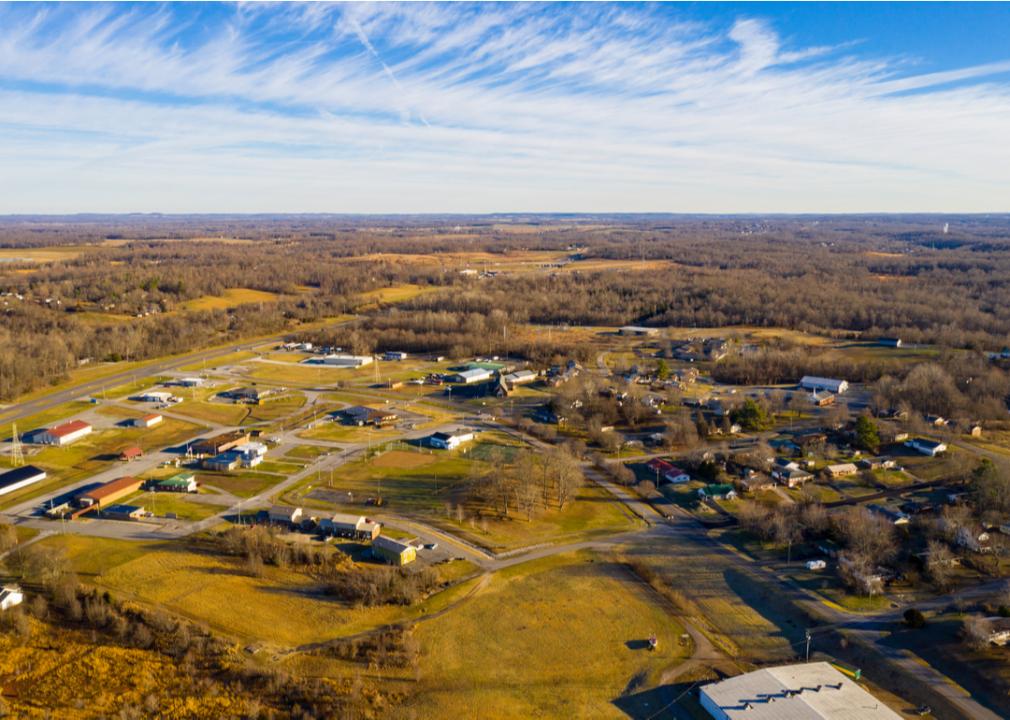
Felix Mizioznikov // Shutterstock
#3. Kentucky
– Drug overdose deaths (March 2020–March 2021): 2,269 (+56.8% change from March 2019–2020)
— Opioid-related deaths: 1,845 (+67.7% change)
— Synthetic opioid-related deaths, excluding methadone: 1,661 (+83.1% change)
— Methadone-related deaths: 45 (+66.7% change)
— Cocaine-related deaths: 176 (+22.2% change)
— Heroin-related deaths: 96 (-33.3% change)
— Psychostimulant-related deaths: 835 (+63.1% change)
In 2015, Kentucky legislatures attempted to curb the opiate epidemic by passing Senate Bill 192, which increases the sentence for possession of heroin with intent to sell to 10 years in prison. The Foundation for a Healthy Kentucky focuses on multiple areas of wellness, including reducing smoking, obesity, and drug use in the state through grant-making, policy, and advocacy work.

Jon Bilous // Shutterstock
#2. West Virginia
– Drug overdose deaths (March 2020–March 2021): 1,443 (+60.3% change from March 2019–2020)
— Opioid-related deaths: 1,230 (+75.7% change)
— Synthetic opioid-related deaths, excluding methadone: 1,160 (+91.1% change)
— Methadone-related deaths: 35 (+150% change)
— Cocaine-related deaths: 122 (-9% change)
— Heroin-related deaths: 137 (+.7% change)
— Psychostimulant-related deaths: 688 (+63.8% change)
The Food and Drug Administration approved the use of naloxone for opioid overdoses in 1971 and the nasal spray has become a crucial tool in the fight to reduce overdose-related deaths. West Virginia counties hosted a free training and distribution day in September at 74 locations across the state.

Canva
#1. Vermont
– Drug overdose deaths (March 2020–March 2021): 211 (+85.1% change from March 2019–2020)
— Opioid-related deaths: 177 (+82.5% change)
— Synthetic opioid-related deaths, excluding methadone: 157 (+82.6% change)
— Methadone-related deaths: 13 (2019–2020 data not available)
— Cocaine-related deaths: 74 (+51% change)
— Heroin-related deaths: 40 (+25% change)
— Psychostimulant-related deaths: 27 (2019–2020 data not available)
The Vermont Department of Health outlines helpful actions someone with a friend or family member with substance abuse disorder can take. Setting clear boundaries, practicing self-care, using stigma-free words, and encouraging the person to seek professional counseling can support recovery.
This story originally appeared on Zinnia Health
and was produced and distributed in partnership with Stacker Studio.